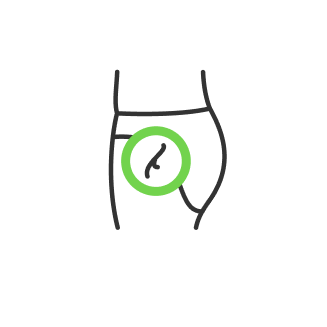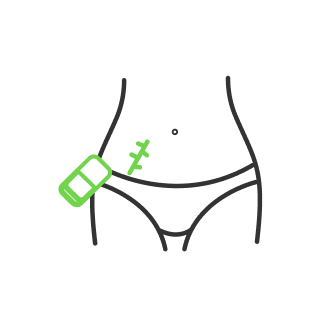Difference between DSLR vs Point-and-Shoot Camera

- What is a DSLR camera vs point and shoot?
- What Is the Difference Between Digital Camera and DSLR? - Benefits of point and shoot cameras - Disadvantages of point-and-shoot devices - Pros of DSLR cameras
Through the decades, technology has risen, which has made a great impact on the difference between amateurs and professionals. Because point-and-shoot cameras have nowadays attained a level of quality comparable to enthusiast DSLR cameras. Both point-and-shoot and DSLR cameras are excellent photography tools. Each has its own set of benefits and drawbacks and each is a feasible option, thus it depends on the type of photography you perform. So, this discussion will try to figure out which camera is better in order to help you make the wisest decision in choosing the ideal variant for you - point and shoot vs DSLR.
What is a DSLR camera vs point and shoot?
Firstly, to understand the difference between dslr and point and shoot cameras, we should sort out what these two categories mean. A point and shoot camera, commonly known as a small camera or a "P&S," is a low-cost, fully automated digital camera. These cameras are popular with ordinary families and people because they are simple to operate and have a user-friendly, compact size. In addition, point and shoot cameras are tiny and fast, depending on focusing and automatic exposure settings to free up the photographer's hands to focus on pointing and shooting. Due to the fixed aperture size, models of these kinds of cameras with a flash have no control over flash exposure. Nevertheless, as a result of technical advancements, some latest models also enable the user to adjust the aperture and exposure. Besides, point-and-shoot cameras include a built-in zoom lens and flash, making them ideal for individuals who desire better image quality than a smartphone without the hassles (and cost) of using a more sophisticated camera.

DSLR is an acronym for digital single-lens reflex camera. It is also known as digital SLR and is a camera that produces high-quality images and is extensively used by both amateurs and professionals. These DSLR cameras are better for professional use as they have got many lenses to choose from. Moreover, you can see the precise image you're taking straight via the viewfinder of a DSLR camera, which helps you visualize and capture your scenes better.

What Is the Difference Between Digital Camera and DSLR?
The comparison DSLR camera vs. point and shoot will aid you in choosing the suitable type of camera. So, let’s consider pros and cons of point and shoot vs DSLR.
Benefits of point and shoot cameras
- Compact size. Point and shoot cameras are small, which is a huge advantage over DSLRs. You may easily put them into your pocket and take them with you wherever you go. Point and shoot shooters don't need to drag along other accessories or attachments, such as extra zoom lenses. Due to their restricted settings, it will be convenient to travel with them.
- Weight. Comparing digital cameras vs DSLR, the first ones are lightweight and portable, in addition to their tiny size. It's small enough to fit in a purse or bag. There's no need for bulky camera backpacks, tripods or other accessories to carry around.
- Simple in using. Fixed lenses and full-auto modes are standard on point and shoot cameras, while some higher-end models allow for greater customization. Point-and-shoot cameras are designed to be used right away (after charging, of course). They are simple to operate and do not require much training. Point-and-shoot cameras are ideal for casual or beginning photographers who don't want to mess with settings or shooting modes (but most models allow you to adjust aperture or shutter speed). Point-and-shoot cameras come with built-in zoom lenses and image stabilization, allowing the photographer to take a range of images with little effort.
![— Photo №3]()
- Affordable price. The finest cameras for anybody wanting to capture a decent photo on a budget are point and shoot cameras. These cameras are very affordable, making them ideal for non-professional photographers who want to generate photos of greater quality than those produced by mobile phone cameras. Even the most costly point-and-shoot cameras are less than a smartphone. A point-and-shoot camera will always be less expensive to buy and maintain than a DSLR camera.
- Quiet. Point and shoot cameras are entirely digital and, as a result, tend to be quite silent. This is a huge benefit, which makes them an excellent choice for photographing animals or candids in a calm environment.
Disadvantages of point-and-shoot devices
- Lower quality. In dslr vs point and shoot photo comparison, in point-and-shoot cameras the megapixel count is minimal since the cameras aren't designed for professionals and don't have strong sensors, resulting in inferior or restricted quality. Having the small sensor size in digital cameras will result in grainy pictures at a 100% crop. Even images taken in daylight are prone to have visible noise in most cases.
![— Photo №4]()
- No depth of field. Because the depth of field is limited or fixed owing to the aperture size, you have little artistic influence over this element. However, comparing an advanced point-and-shoot camera vs DSLR, this camera will keep everything in focus. You can't use a smartphone to blur the backdrop to highlight a topic like you can with a DSLR.
- Fixed lens. The fixed lens implies you can't change lenses and are stuck with whatever is in the camera eternally. Because you can't change lenses, your photography possibilities are restricted. You can't upgrade to a better lens, flash, or add-on battery since you don't have the choice. You're limited to the camera's basic zoom, wide-angle, and macro settings.
![— Photo №5]()
- Shooting in the dark. Night photography is difficult to do with point-and-shoot cameras. The sensors don't have a lot of power.
- Limited control. Point and shoot cameras lack the manual control that DSLRs have. Point and shoot cameras, unlike DSLRs, provide you far less control over the photo-taking process. Many compact point-and-shoot cameras have restricted aperture and shutter speed control, lack distance markings on the lens, and are more difficult to manage in manual mode.
Nowadays technological progress has gone even further beyond the DSLR cameras, and still this type has got multiple advantages. Let’s have a look at the comparison of point and shoot cameras vs DSLR.

Pros of DSLR cameras
- First and foremost, good quality. DSLR cameras feature large sensors and high megapixel counts. Far superior to point-and-shoot cameras. As a result, the finished image is of extremely high resolution and is of professional quality. Therefore, a large sensor helps to produce pictures with less noise.
- Long battery life. Because the optical viewfinder uses less power than comparable cameras, your battery will last longer, allowing you to spend more time capturing photographs. The majority of DSLRs have a battery life of over 500 photos per charge. Point-and-shoot cameras generally have a capacity of 200 photos. Thus, you do not need to be carrying a battery charger constantly.
- Interchangeable lenses. Most digital cameras have fixed focal length lenses, which means they have less manual control. A DSLR camera may use a number of lenses. Contrasting the point shoot camera vs DSLR, the last one has a significant edge in this regard. The option to switch lenses opens up a world of possibilities. The lens is, without a doubt, the most crucial part of photography. This is because the quality and convenience of photography are mostly determined by the camera lens. The lens has a far greater impact on the final output.
![— Photo №7]()
- Shutter and focus speeds. DSLR cameras are capable of acquiring focus rapidly and taking numerous photos per second. Professional DSLR cameras may shoot at speeds of up to 10 frames per second. SLR cameras are used for all professional action and sports photography. On a DSLR, you may adjust the shutter and focus speeds to your liking.
- Full control. You have complete control over the aperture since you can change lenses. As a result, a DSLR generally has a lot more buttons and controls than a point-and-shoot camera. You'll be able to rapidly alter settings once you've learned how to use those controls. A DSLR allows you to fine-tune numerous settings for the best results. To enhance the outcome, you may change the ISO, shutter, aperture, white balance, and other settings for each photo. While the versatility of a point-and-shoot camera is restricted.
![— Photo №8]()
Speaking about digital camera DSLR vs point and shoot cameras, there is some drawbacks of owning the first one:
- High price. The cost of a DSLR camera is more than that of a point-and-shoot camera. Even a secondhand entry-level DSLR will almost certainly cost more than a high-end point-and-shoot. DSLRs are expensive luxury because of their better quality, inner components, and functionality. An entry-level camera with a kit lens can set you back anything from $500 to $800. That is only the start-up cost. You might wind up spending three times as much on accessories alone over time.
- Weight and Size. You'll have to carry a bag with you all the time because a DSLR is large and requires particular maintenance. You'll be dragging a large backpack around all day if you want to bring numerous lenses for the session. After a long period of usage, these cameras impact negatively on the backs and necks.
![— Photo №9]()
- Extra accessories and damages. Unless you buy a kit, DSLRs come with simply the body (and even then, the lenses aren't always great). Most DSLRs come with a basic 18-55 mm lens set as standard. You'll need to spend more money if you want additional lenses, such as zoom or wide-angle lenses, or macro capabilities. Repairing DSLRs and lenses can, of course, be prohibitively expensive. To avoid dust collection and other mechanical issues, you'll need to understand how to properly care for your camera and lenses. Remember that lenses are sometimes more expensive than the camera.
![— Photo №10]()
- Noise. When shooting photos, DSLRs are notoriously loud, which has its own set of issues. Every time the shutter opens and shuts, there is a significant quantity of noise that comes out of the camera due to the nature of DSLRs and their design. Some modern cameras, such as the Nikon D600, now feature a specific "Quiet" setting that reduces noise.
- Complex in using. Working with DSLR cameras is fairly difficult. Once you've purchased a DSLR, you'll need to devote a significant amount of time to learning how to use it and figuring out what all of the buttons do. This method might easily annoy some people. With a DSLR, you'll need to practice patience.

To sum up, there are lots of differences between point and shoot vs DSLR. For instance, point-and-shoot cameras are easier to use and carry about than DSLRs, but they don't provide as much control over the final image. The majority of its usage is automated. DSLR cameras, on average, create better images, allow for more creativity, and have more speed and functionality than point-and-shoot cameras, but they are more expensive and require more experience. Whereas, point-and-shoot cameras are simple to operate, affordable, and suitable for everyday usage. One of the biggest advantages of point and shoot is its portability. A little piece of advice is that point and shoot cameras may be good enough for amateurs, consequently, the DSLR cameras can be perfectly utilised by professionals.
He started his career as a professional photo designer and retoucher. Professional commercial photographer with 20 years of experience. He is a leading advertising photographer and has worked as a food photographer with Michelin-starred chefs. His work with models can be seen on the calendars of many leading companies in Ukraine. He was the owner of the photo studio and photo school "Happy Duck".

with RetouchMe





















